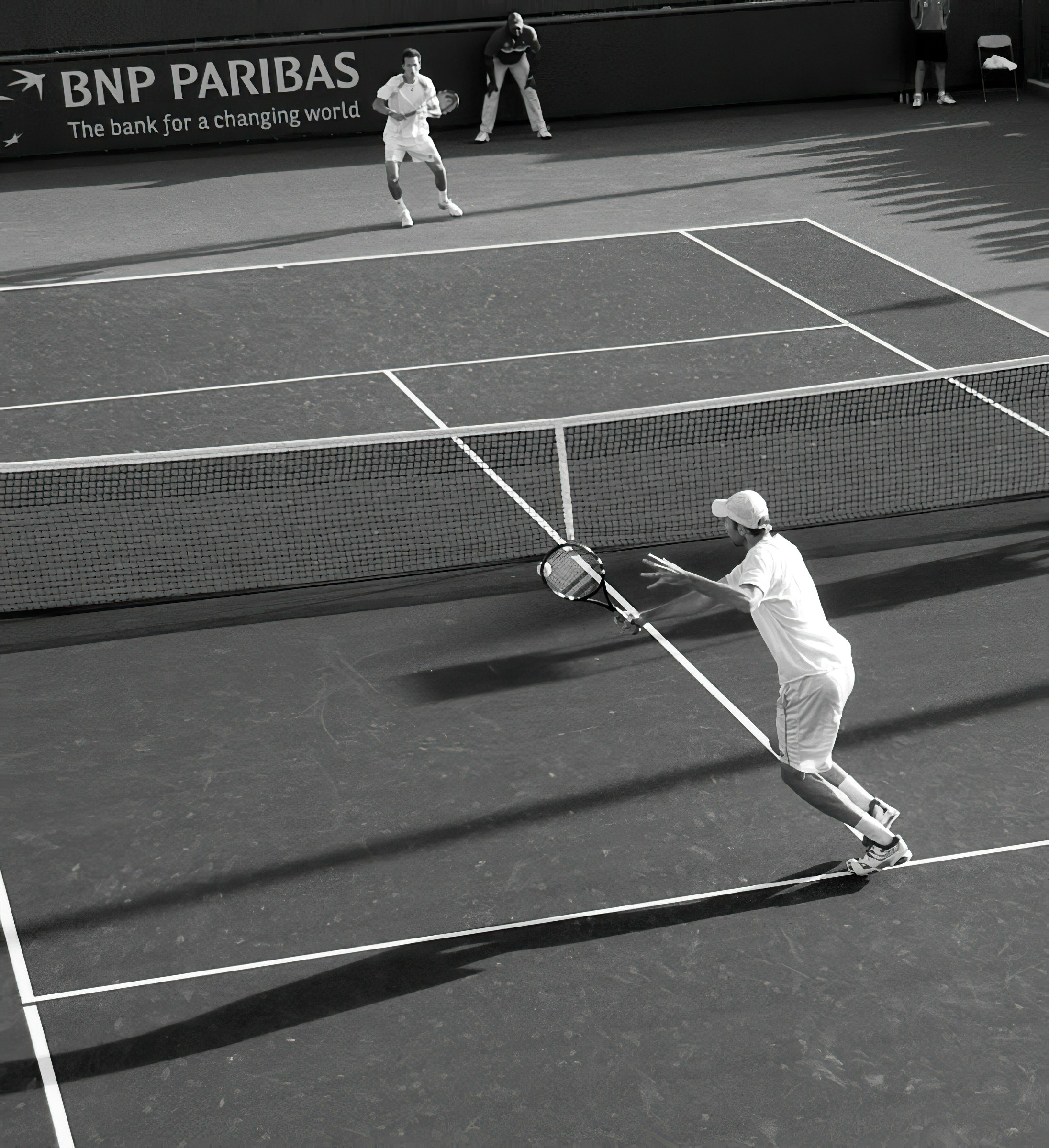Volleys decide points quickly, especially in doubles or when you come to the net. If you can’t react fast with your hands, you’ll miss opportunities or get the ball hit past you. For juniors, having quick hands at the net opens up more ways to win points.
Most players work on groundstrokes for hours but spend little time on volleys. This doesn’t make sense when volleys come up in most matches. Quick hands at the net aren’t just about speed – you need control and the right technique to handle balls coming at you fast.
This post covers the basics of solid volley technique, specific drills to develop quicker reactions, and how to use these skills during actual matches.
Fundamentals of a Strong Volley
Keep Your Swing Compact
Forget everything about big swings when you’re at the net. Volleys work with short, controlled movements. No backswing. The ball comes at you fast, so you need to react fast. A long swing takes too much time and gives you less control.
Think of your racquet as a wall that redirects the ball, not a hammer that smashes it. Focus on your opponent’s shot and your positioning, not the size of the swing. Practice taking your racquet back only a few inches, then moving forward to meet the ball.
Ready Position at the Net
Hold your racquet out in front of your body with both hands. Keep your wrist firm – not rigid, but stable. Your racquet head should be slightly above your wrist level. This position lets you react quickly to balls hit to either side.
Many players hold their racquet too low or too far back when they’re at the net. This wastes time when the ball comes at you.
Use Your Feet
Split step when your opponent hits the ball, just like you would at the baseline. Your feet need to be ready to move in any direction. Don’t plant yourself in one spot and try to reach for everything with your arms.
Take small steps to get into position for each volley. Your body weight should move into the shot, not away from it. This gives you more control and power without needing a big swing.
Drills to Develop Fast Hands at the Net
Rapid-Fire Feed Drill
Have a partner or coach stand at the baseline and feed you balls quickly, one after another. Start with 10 balls in a row, aiming for different spots – some to your forehand volley, some to your backhand, some right at your body.
The goal is to react quickly and place each volley back to your partner. Focus on clean contact and getting the ball back in play. As you improve, have your partner feed faster or mix in some balls hit directly at your feet.
Wall Volleys
Find a wall and stand about 6 feet away. Hit volleys continuously against the wall, alternating between forehand and backhand. The ball comes back fast, so you have to react quickly and keep your movements short.
Start with 20 volleys in a row without letting the ball bounce. Once you can do that consistently, try to increase your count. This drill improves your hand-eye coordination and teaches you to control the racquet face with small movements.
Two-Ball Drill
Have a coach or partner alternate feeding balls to your forehand and backhand volleys in quick succession. They should feed a ball to your forehand, then immediately feed one to your backhand, then back to your forehand.
This forces you to switch quickly between forehand and backhand grips and positions. Start slowly to get the movement pattern right, then speed it up. The key is smooth transitions between shots, not rushing and losing control.
Ball Machine Drill
Set a ball machine to fire balls at net height from different angles. Program it to shoot every 2-3 seconds so you have to react quickly but still have time to get into position for each shot.
Mix up the settings – some balls straight at you, some wide to your forehand, some to your backhand. Vary the height too, with some balls at chest level and others down by your feet. If you want to practice hitting a specific volley, like one that makes contact below the net, ball machines are great for practicing in succession.
Taking Volley Skills into Match Play
Doubles Application
In doubles, fast hands let you poach more effectively and intercept balls that would otherwise go to your partner. Practice moving across the net to cut off shots hit down the line or crosscourt.
When you’re at the net in doubles, stay active. Don’t just stand there waiting for an easy volley. Move your feet, keep your racquet ready, and look for opportunities to end the point. Fast hands give you more options to attack.
Serve and Volley
If you’re coming to the net behind your serve, your first volley is crucial. You’re usually hitting it while moving forward, so your footwork and hand speed need to work together.
Practice this during serving drills. Serve, move forward, split step when your opponent starts to swing, then react to their return. Get it deep and keep pressure on your opponent.
Court Positioning
The closer you are to the net, the faster you need to react. But getting too close makes you vulnerable to lobs. Find the right distance where you can still cover lobs but react quickly to shots hit at you.
Generally, position yourself about 10-12 feet from the net for most volleys. This gives you enough time to react to lobs but keeps you close enough to end points. Adjust based on your opponent – move back against hard hitters, move forward against softer shots.
Building Confidence
Practice builds confidence. The more you work on these drills, the more comfortable you’ll feel when balls come at you quickly during matches.
Start by looking for opportunities to come to the net during practice matches or drills. Don’t wait for the perfect moment – create opportunities by hitting approach shots and following them forward. The more you practice volleys under pressure, the better your reactions become.
Practice Makes Perfect
Volleys require different skills than groundstrokes. Your timing is different, your swing is different, and your mindset needs to be different. Fast hands come from practicing these specific movements until they become automatic.
Work on volley drills as regularly as you practice your other strokes. The players who dominate at the net are usually the ones who’ve put in the time to develop quick reactions and solid technique.
Looking for personalized volley training? Athletes Untapped connects players with private tennis coaches who can help sharpen net skills, reaction drills, and overall match play. Families can explore local tennis coaches to take their child’s game to the next level.




